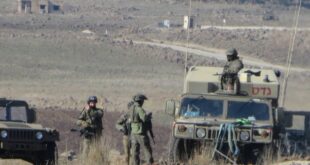The captagon economy in Syria was never the creation of a single political authority. New data suggests it is part of a deeply rooted regional network that transcends borders, governments, and even regime change.
When former Syrian president Bashar al-Assad’s government fell on 8 December 2024, the world’s attention turned to Syria’s uncertain political future. Yet another war was quietly advancing beneath the headlines – one that outlasted the army, prisons, and bureaucracy: the war over drugs.
Figures released by the Syrian Interior Ministry of the new transitional government confirm that Syria remains one of the world’s largest hubs for the production and trafficking of the amphetamine pill, captagon. While the former government’s security and military apparatus had long been accused of facilitating this illicit economy, the trade has endured long after power shifted hands, revealing an infrastructure that runs far deeper than any single authority.
Despite the Syrian government’s fall and the dismantling of its once-omnipotent security state, the trade has not only survived but appears to have adapted, retaining its operational core, networks, and reach.
Even amid military operations and security raids on captagon factories and depots, production and smuggling have continued. The evidence points to networks that were largely untouched by the political upheaval – networks that have simply adapted, surviving the transition intact and raising questions about who, or what, truly controls Syria’s narcotics economy.
The scale of seizures
According to statements from Syria’s transitional authorities and international reporting, the scale of the captagon trade remains staggering. The Financial Times (FT) reported that Syrian forces seized more than 200 million captagon pills between January and August 2025, as raids intensified on former government facilities.
The country’s Interior Minister has separately claimed that all captagon laboratories have been shut down, though the persistence of seizures suggests otherwise.
This raises a crucial question now haunting post-Assad Syria: Who controls the country’s narcotics economy?
The new government’s data paints a picture of an illicit empire woven deep into the fabric of the Syrian economy. From the coast to the desert, captagon pills continue to flow across borders in industrial volumes: 64 million were seized in Latakia alone, three million in Rif Dimashq, and nearly three million more in Deraa – long a gateway to Jordan and the Arabian Peninsula.
Alongside the pills came large quantities of hashish (a drug made from the concentrated resin of the cannabis plant) and other narcotics: over 700 kilograms of hashish, 2,000 grams of cocaine, and 725 grams of heroin were confiscated in the same period. The numbers dwarf anything recorded before the government’s fall.
According to data from the United Nations Office on Drugs and Crime (UNODC), the volume of recorded captagon seizures in Syria in 2023 was about 1,674 kg (equivalent to approximately 9,847,059 pills, assuming an average pill weight of 0.17 grams – based on analytical data and averages used in European reports).
In comparison, what was seized in Syria during the past 10 months is estimated at 13,763 kg, meaning that seizures in Syria over 10 months are more than eight times the annual seizures recorded in 2023.
Even by conservative calculations, this makes Syria the epicenter of global captagon production – a fact previously acknowledged by the British government, which estimated the country accounted for around 80 percent of global supply during the war years.
The UNODC’s World Drug Report 2025 states:
“The end of the conflict in 2024 has cast uncertainty on the ‘captagon’ market. Large seizures of ‘captagon’ and the discovery of sites used for the manufacture of the drug in the Syrian Arab Republic have possibly disrupted the supply. But the latest seizure data for 2024 and early 2025 confirm the persistence of ‘captagon’ flows in and out of the country. This suggests either the release of pre-existing stockpiles of the drug or its continued production under different conditions or locations.”
It also notes that “Recent large seizures in neighbouring countries suggest that trafficking is ongoing, probably as a result of the release of existing stocks.”
A trade built to outlive its creators
Speaking to The Cradle, Syrian researcher Dr Malik al-Hafez says, “figures of this magnitude can only be explained within the framework of an organized trade” targeting external markets – specifically the Persian Gulf markets, which appear to be the primary destination for captagon produced in Syria.
He points out that the smuggling routes passing through some neighbouring countries reflect the regional nature of the activity, explaining that the design of transport and distribution operations from the outset was intended to be transnational, with routes adapted according to opportunities and threats.
He adds that what is happening inside Syria is merely the first stage in a long chain of operations that end in consumer markets that are geographically distant but organically connected to these networks.
For Hafez, the scale and persistence of captagon production reflect a “deep-rooted infrastructure,” one that functioned as a “parallel economy” long before Assad’s fall.
The collapse of the Assad government, he adds, did not end this system but pushed it to redeploy and shift its centers of gravity while maintaining historical ties with influential actors in neighbouring states, especially in border areas.
The security campaigns announced by the transitional authorities achieved tactical success in demonstrating control capabilities, but did not touch the “backbone” of the network, nor did they change the larger equation that allows the continued flow of drugs in such quantities.
Missing records and hidden routes
The fall of Damascus, once expected to disrupt supply chains, instead exposed vast manufacturing sites still operational under new management. Syria’s own seizure statistics fail to capture the full picture. Neighboring states continue to intercept large volumes originating from Syrian territory.
Jordan, for example, reported seizing 14 million captagon pills and 603 slabs of hashish during the same period – suggesting that significant volumes go unrecorded inside Syria.
Just last week, Jordan’s Anti-Narcotics Department and its Syrian counterpart are said to have thwarted seven cross-border drug smuggling attempts and seized nearly 1 million pills intended for illegal distribution in the region.
Hafez cautions that official numbers represent only the tip of the iceberg. Smugglers, he explains, easily reroute shipments when one corridor is compromised. Reserve warehouses ensure a constant supply, while porous borders and corruption create ideal conditions for concealment. The declared figures, he says, offer relative indicators of the trade’s activity – not its true scale.
Smuggling without borders
The geographic spread of narcotics seizures reveals how Syria’s captagon trade has evolved into a decentralized national network. From Latakia and Aleppo in the north to Deraa and Suwayda in the south, and from the Lebanese border to the Iraqi desert, drug activity now spans every direction.
This dispersion reflects the adaptive logic of a system designed to survive regime change and shifting front lines. Each region has become a node in a larger web, turning Syria itself into a single, fluid smuggling corridor rather than a state with isolated trafficking zones.
Smuggling methods have also modernized. The Jordanian army says it has downed more than 300 drones carrying narcotics since early 2025 – an average of 43 per month. Other innovations include heat balloons, buried metal pipes, and even children’s bicycles and furniture stuffed with pills.
These methods reflect the presence of a highly organized system capable of circumventing modern detection and surveillance systems and evading border patrols. At the same time, the networks have not abandoned traditional methods, such as hiding drugs within legal shipments or exploiting ports and airports using forged documents.
Hafez calls this a “technological race” between traffickers and security forces. Drones, he notes, deliver small, high-value loads directly to pickup points across borders; heat balloons bypass ground surveillance in mountainous terrain. The goal, he says, is to diversify methods so no single strategy can block them all.
Who runs the trade now?
As Syria’s power structure shifts, debate continues over who truly directs the drug economy. Two scenarios dominate:
One sees independent networks that grew within the cracks of the old system, exploiting corruption to build autonomous systems, now partnering with new armed groups. The other posits a continuation of the previous order, where the same figures – military, business, and criminal – re-emerged as self-financed mafias detached from politics.
Whichever is true, the result is the same: a self-sustaining system that uses geography, instability, and economic collapse to function as a shadow state powered by illicit wealth. Traditional smuggling routes remain unchanged, carrying shipments from southern and western Syria through Jordan into the lucrative markets of the Persian Gulf, especially Saudi Arabia – the prime destination.
Hafez attributes the success of these networks in maintaining their activity despite major political and security changes to their “organizational flexibility,” explaining that they do not rely on a single central leadership that can be targeted but on a network of small, reconfigurable nodes.
He points out that reports and studies on Syrian trafficking networks confirm that captagon production occurs in small factories scattered across multiple areas, reducing the impact of targeting any single site. He also notes that distribution and smuggling networks benefit from the social structure in some border areas, which provides logistical cover or protection in exchange for financial returns.
Distribution, he says, relies on local patronage and the informal ‘hawala’ system to move money beyond state reach.
The Captagon lords
On 3 August 2025, Syria’s Drug Enforcement Administration, working with Turkish authorities, arrested Amer Jadie al-Sheikh, the country’s most dangerous drug trafficker and one of the region’s most notorious. Long-wanted internationally, Sheikh was described by security agencies as a persistent threat operating across multiple countries.
An Organized Crime and Corruption Reporting Project (OCCRP) and Daraj investigation published in 2023 identified him as a central figure in the drug empire. It also exposed a hidden rivalry with Lebanese dealer Hassan Daqqou, the “Captagon King,” who allegedly tried to intercept Sheikh’s shipments through security contacts.
Earlier this year, Lebanese army intelligence raided a warehouse containing 50 million captagon pills and hashish bound for the Persian Gulf, naming Sheikh and his aide Abu Khaled al-Absi as owners. The army called him “one of the most dangerous traffickers in the Middle East,” tied to both captagon and cocaine shipments through Latakia’s port.
His arrest, however, has done little to stem the trade – instead revealing rival criminal empires competing to fill the vacuum left by the state.
New alliances: ISIS and the narco frontier
Local reports suggest some trafficking groups have forged ties with ISIS cells in Syria’s east and south, trading protection and logistics for a cut of profits. This convergence of organized crime and takfiri networks has reshaped local power dynamics, creating overlapping interests in maintaining the drug routes.
In Suwayda’s rugged countryside, weak state authority and the presence of armed groups outside any legal framework have turned the province into a hub for production and storage. Its mountainous terrain provides natural cover – a perfect environment for deals away from government oversight.
Beyond crime: A regional economy of survival
Syria’s captagon trade functions as a regional political economy shaped by war, sanctions, and the absence of effective governance. It ties together warlords, militias, smugglers, and businessmen across several states.
Field evidence points to a regional backbone – a web of finance and logistics that extends beyond Syria’s borders. What took shape under Assad has since adapted to new patrons and markets.
The drug economy outlasted the state and reorganized with new faces, new routes, and deeper entrenchment. In post-Assad Syria, captagon has become one of the few industries that reliably link the country to its neighbors – a cross-border network with no obvious end in sight.
 Eurasia Press & News
Eurasia Press & News



